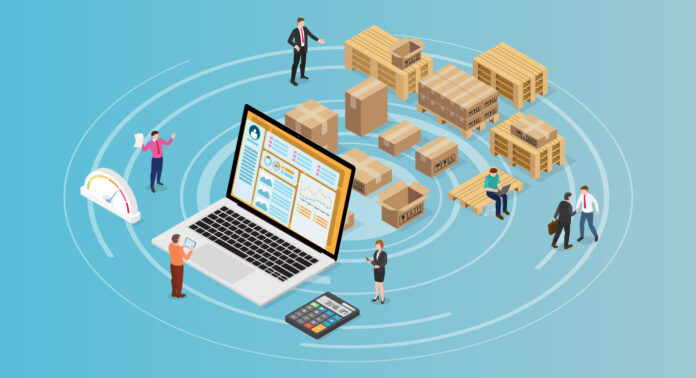How Online Shopping Changed Everything
This transformation created entirely new business models across different industries. The shift from traditional retail stores to online platforms brought unique challenges. Companies suddenly needed much faster delivery systems to meet growing demands.
Digital commerce growth has accelerated during recent years at an unprecedented rate. This acceleration happened across all global markets and regions simultaneously. More people started shopping online regularly for greater convenience than traditional stores. E-commerce logistics has completely transformed the way we buy and sell products worldwide.
New Delivery Methods Emerge
Same-day delivery services became a standard customer expectation rather than a luxury. Companies no longer offer this as a premium service option only. Companies invested heavily in building local distribution centers strategically placed throughout cities. Drone technology started appearing in select regions for ultra-quick package transport.

Last-mile delivery solutions evolved extensively to handle increased package volumes. Urban areas witnessed the rapid rise of convenient package lockers throughout neighborhoods. Rural regions required completely new innovative strategies to reach customers efficiently. Advanced technology played a crucial role in optimizing complex delivery routes.
Technology Drives Better Systems
Artificial intelligence systems now actively help predict detailed customer buying patterns. They also predict precise inventory needs accurately for businesses. Real-time tracking systems provide customers with complete visibility of their orders. Warehouse robots work seamlessly alongside human workers to process orders quickly.
Advanced data analytics completely transformed how companies manage supply chains strategically. This transformation affects complex inventory systems across multiple locations. Predictive models actively help businesses prepare for seasonal demand changes effectively. Cloud-based systems allow seamless real-time coordination between logistics partners.
Global Trade Gets Faster
International shipping services became significantly more accessible for small businesses. Medium-sized businesses worldwide also gained easier access to expand their market reach. Cross-border E-commerce has successfully opened entirely new markets for companies. Customs procedures are actively adapted to handle increased volumes of small packages.
Digital commerce growth created substantial demand for specialized international shipping services. These services are tailored specifically to online retail needs. Express delivery networks expanded their global reach extensively to serve e-commerce. Multi-modal transportation systems combine air, sea, and land shipping methods.
Major Challenges Emerge
Peak shopping seasons now create ma assive strain on logistics networks worldwide. This strain is especially severe during holiday periods and special events. Holiday periods require extremely careful planning and substantial additional capacity. Weather disruptions affect delivery schedules much more severely now.
Labor shortages regularly affect many parts of the e-commerce logistics chain. These shortages occur throughout various regions and countries worldwide. Warehouse workers, delivery drivers, and specialized personnel are in high demand. Training programs actively struggle to keep up with growing demand.
Environmental Impact Grows
Individual package deliveries create significantly more carbon emissions than bulk shipments. This comparison is made against traditional bulk shipments to stores. Packaging materials increased substantially due to growing protective shipping needs. Urban congestion worsened considerably as delivery trucks made frequent stops.
Green logistics initiatives emerged rapidly as companies faced consumer pressure. Environmentally conscious consumers worldwide demand sustainable practices from businesses. Carbon-neutral shipping options became available at premium prices for customers. Recyclable packaging materials gradually replaced traditional plastic and foam protectors.
Customer Expectations Rise
Modern customers expect faster delivery times than ever before in history. They want complete transparency about their order status throughout shipping. Real-time notifications became standard practice for all major e-commerce platforms. Customer service quality directly impacts business success in competitive markets.

Return policies became more flexible as companies competed for customer loyalty. Free returns encouraged more online purchases from hesitant customers. Easy return processes reduced the perceived risk of online shopping. Customer reviews now heavily influence purchasing decisions for most shoppers.
Warehouse Operations Transform
Automated systems revolutionized how warehouses process and fulfill customer orders daily. Robotic picking systems work around the clock to improve efficiency. Inventory management software prevents stockouts and reduces excess inventory costs. Warehouse layouts are optimized for speed rather than traditional storage methods.
E-commerce logistics demands created the need for specialized fulfillment centers near population centers. These centers focus on speed rather than long-term storage capabilities. Cross-docking facilities minimize handling time between receiving and shipping products. Temperature-controlled storage expanded for food and pharmaceutical e-commerce growth.
Supply Chain Flexibility Matters
Companies learned the importance of diversified supplier networks during disruptions. Single-source suppliers created vulnerability during unexpected events like pandemics. Multiple suppliers across different regions provide backup options for businesses. Supply chain visibility tools help companies monitor potential disruption risks.
Just-in-time inventory strategies required adjustment for e-commerce demand patterns. Buffer stock became necessary to handle unpredictable online order spikes. Demand forecasting improved through better data analytics and machine learning. Agile supply chains adapt quickly to changing market conditions.
Future Looks Promising
Autonomous delivery vehicles will likely become common in urban areas soon. Technology advances and regulations adapt to support this transformation. Advanced blockchain technology may significantly improve supply chain transparency and security. Virtual reality technology could completely change how customers experience products online.
Smart cities will actively integrate delivery systems into urban planning strategies. Underground delivery networks might effectively reduce surface traffic congestion significantly. Hyperlocal fulfillment centers could bring products closer to customers than possible. Artificial intelligence will make logistics networks more predictive and responsive.
Innovation Drives Growth
Machine learning algorithms help companies predict demand patterns more accurately. These predictions reduce inventory costs and improve customer satisfaction rates. Internet of Things sensors track packages throughout the entire shipping journey. Real-time data helps logistics companies make better operational decisions daily.

Blockchain technology creates transparent supply chains that customers can trust completely. Smart contracts automate payments and reduce processing delays significantly. Digital twins simulate logistics operations before implementing costly changes. Advanced analytics turn shipping data into actionable business insights.
Market Competition Intensifies
Major retailers compete fiercely for the fastest delivery times to customers. This competition drives continuous innovation in logistics technology and processes. Small businesses struggle to match the delivery speeds of large corporations. E-commerce logistics providers must constantly upgrade their capabilities to survive. If you want to learn about general information, follow Dpworldnews.





